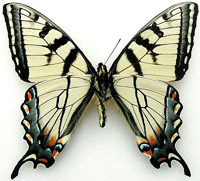Lepidoptera Survey, International

The Taxonomic Report of the International Lepidoptera Survey
Date of this Version
12-31-2021
Document Type
Article
Citation
Taxonomic Report of the International Lepidoptera Survey (December 31, 2021) 9(10): 1-20
Also available at https://lepsurvey.carolinanature.com/ttr/ttr-9-10.pdf
Also available at the Internet Archive, the Biodiversity Heritage Library, Zobodat, and Zenodo (doi: 10.5281/zenodo.5812396)
Abstract
The present paper reevaluates the subspecific standing of the nominotypical and three described subspecies of Euphydryas phaeton (Drury, 1773). The nominotypical subspecies phaeton occupies the mid-Atlantic region, with undefined zones of contact with described subspecies borealis (F. Chermock & R. Chermock, 1940) to the north, and subspecies schausi (Clark, 1927) to the south. Nominotypical phaeton is an intermediate phenotype between borealis and schausi, which are each noticeably different from each other but both reasonably similar to intermediate (nominotypical) phaeton. Both borealis and schausi were synonymized under nominotypical phaeton since about time of their descriptions, by authors and list makers who did not justify their reasoning for essentially ignoring the original descriptions. The common belief is that there is no phenotypic difference between the three described northeastern subspecies and all are treated as nominotypical E. p. phaeton. In the present analysis, recently described subspecies ozarkae (Masters, 1968) bears a striking resemblance to schausi, making delineation of the zone of contact between the two very difficult, other than by habitat and primary host preference of each. Subspecies schausi, having been originally described within the genus Melitaea, is preoccupied by the name Melitaea schausi (Godman & Salvin, 1901), presently considered a junior synonym of Chlosyne definita definita. Thus, a replacement name for schausi (Clark, 1927) is necessary.


Comments
Copyright 2021, International Lepidoptera Survey. Open access material
License: Creative Commons Attribution-ShareAlike-NonCommercial 4.0 International (CC BY-SA-NC 4.0 International)